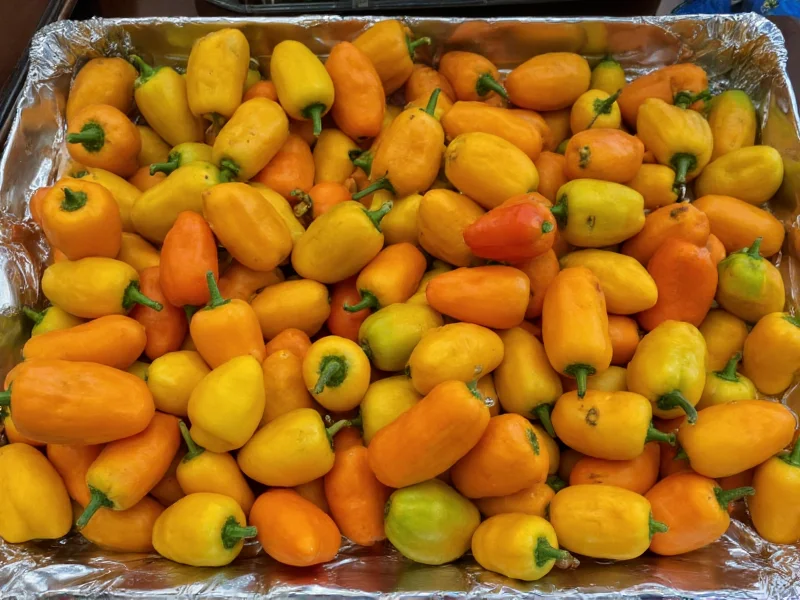Store whole serrano peppers in a perforated plastic bag in the refrigerator's crisper drawer for 2-3 weeks. For longer preservation, freeze sliced peppers on a tray before transferring to airtight containers (6-8 months), or dry them completely for 1-2 years of shelf life. Never wash peppers before storage as excess moisture accelerates spoilage.
Proper serrano pepper storage preserves their distinctive grassy heat and vibrant flavor while preventing premature spoilage. These medium-heat chilies (10,000-23,000 Scoville units) require specific handling different from bell peppers or milder varieties due to their thinner walls and higher moisture content. Understanding the science behind pepper preservation helps home cooks and gardeners maximize their harvest or grocery purchase.
Why Serrano Pepper Storage Requires Special Attention
Serrano peppers' thin walls make them more perishable than thicker-skinned varieties like habaneros. Their high water content (approximately 92%) creates ideal conditions for mold growth when stored improperly. Unlike bell peppers that tolerate room temperature storage for several days, serranos begin deteriorating within 48 hours at ambient conditions. The capsaicin compounds responsible for their heat are sensitive to light and temperature fluctuations, affecting both flavor intensity and nutritional value over time.
Short-Term Refrigeration Methods (1-3 Weeks)
For immediate use within three weeks, refrigeration provides optimal freshness retention. Place unwashed peppers in a perforated plastic produce bag or paper bag in your refrigerator's crisper drawer set to high humidity. The perforations allow necessary airflow while maintaining moisture balance. Avoid sealing peppers in airtight containers without ventilation, which traps ethylene gas and accelerates decay.
When storing cut serrano peppers, place slices in an airtight container lined with paper towels to absorb excess moisture. Consume within 5-7 days as cutting exposes flesh to oxygen, diminishing flavor compounds. Never store near ethylene-producing fruits like apples or bananas, which dramatically shorten pepper shelf life.
Medium-Term Preservation Techniques (3-8 Weeks)
For extended freshness without freezing, try these professional methods:
- Paper Towel Method: Wrap each pepper individually in a dry paper towel before placing in a ventilated container. Replace towels weekly to maintain optimal moisture levels.
- Vinegar Rinse: Briefly dip peppers in a solution of 1 part white vinegar to 3 parts water, then dry thoroughly before refrigerating. This creates a protective barrier against mold.
- Stem-Intact Storage: Keep stems attached during storage as they create a natural seal against moisture loss and pathogen entry.
Long-Term Storage Solutions (6+ Months)
For gardeners with abundant harvests or those preparing for seasonal shortages, these methods deliver professional results:
Freezing Serrano Peppers
Flash-freeze whole or sliced peppers on a parchment-lined baking sheet before transferring to freezer bags. Remove as much air as possible to prevent freezer burn. Frozen serranos maintain 90% of their flavor compounds for 6-8 months. For cooking applications, freeze peppers in oil or vinegar for ready-to-use flavor infusions.
Drying Techniques
Air drying works best in arid climates with humidity below 60%. String peppers through stems (ristra style) in a dark, well-ventilated space. Oven drying requires temperatures below 140°F (60°C) with door slightly ajar for 8-12 hours. Dehydrators provide most consistent results at 125°F (52°C) for 10-15 hours until peppers snap when bent. Store dried peppers in airtight containers with oxygen absorbers.
Pickling Process
Create refrigerator pickles by submerging peppers in equal parts vinegar and water with 1 tablespoon salt per cup. Add garlic or spices for flavor variation. Properly sealed pickled serranos last 6 months refrigerated. For shelf-stable preservation, follow tested canning procedures with proper acidity levels.
| Storage Method | Duration | Flavor Retention | Best For |
|---|---|---|---|
| Refrigerated (whole) | 2-3 weeks | 95-100% | Immediate cooking needs |
| Refrigerated (cut) | 5-7 days | 85-90% | Meal prep |
| Flash-frozen | 6-8 months | 80-85% | Sauces and cooked dishes |
| Air-dried | 1-2 years | 70-75% | Spice blends and rehydrating |
| Pickled (refrigerated) | 6 months | 75-80% | Tacos and garnishes |
Common Serrano Pepper Storage Mistakes
Avoid these frequent errors that compromise pepper quality:
- Washing before storage: Excess moisture creates ideal mold conditions. Wash only immediately before use.
- Storing at room temperature: Serranos deteriorate rapidly above 70°F (21°C), losing crispness within days.
- Using non-perforated bags: Trapped moisture accelerates decay - always provide ventilation.
- Freezing without flash-freezing: Directly placing peppers in freezer bags causes clumping and texture damage.
- Storing near ethylene producers: Apples, bananas, and tomatoes release gases that speed ripening and spoilage.
Identifying Spoiled Serrano Peppers
Discard peppers showing these deterioration signs:
- Texture changes: Soft spots, wrinkling, or slimy surface indicate advanced decay.
- Color shifts: Darkening from bright green to yellow or brown signals aging.
- Mold presence: Any visible fuzzy growth requires immediate disposal of affected peppers.
- Odor changes: Sour or fermented smells indicate bacterial growth.
Minor surface blemishes can be cut away if the rest of the pepper remains firm and vibrant. When in doubt about safety, discard questionable peppers as capsaicin doesn't prevent harmful bacterial growth.
Optimizing Storage for Specific Culinary Uses
Tailor your storage method to intended recipes:
- Fresh salsas: Refrigerate whole peppers to maintain crisp texture
- Hot sauces: Freeze peppers in ice cube trays with vinegar for portioned use
- Infused oils: Store dried pepper flakes in dark glass bottles away from light
- Cooking applications: Freeze sliced peppers for direct addition to stews and soups











 浙公网安备
33010002000092号
浙公网安备
33010002000092号 浙B2-20120091-4
浙B2-20120091-4